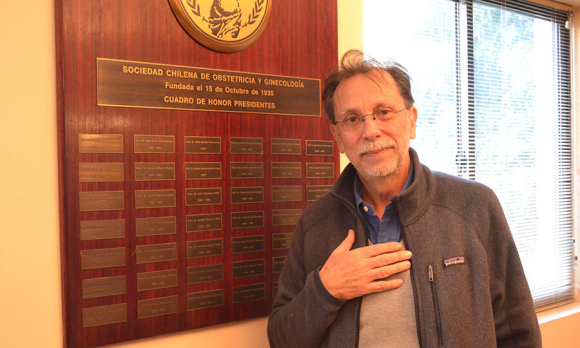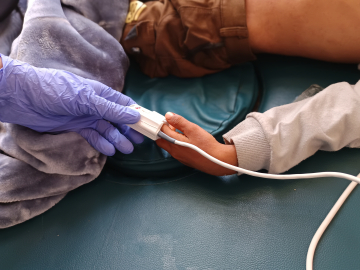Profit over Patients: C-Sections in Chile Reach Alarming High
SANTIAGO—It was early in the morning when Carmen Gloria Palma’s water broke in Santiago, but she was prepared. She’d done hours of research and even printed out a birthing plan to give her doctors on how she wanted her natural birth to go.
Things didn’t go as planned. After hours of labor and the night hours approaching, the hospital told her she needed a cesarean section. But, they didn’t give any clear medical reason, so Palma refused. And when she did, they told her, “Women who don’t do what the medical team says will cause problems for the child.” Palma took this as a threat, so she stayed quiet.
Palma’s son, Benjamin, was born in 2015—and he was healthy, but has since struggled with allergies, a common side effect of a C-section. Other complications can include increased risk of obesity, autoimmune diseases or respiratory problems for the baby and bleeding, uterine rupture, cardiac arrest or even death for the mother.
Palma, now 43, experienced extreme postpartum depression—which she traces to the unwanted C-section.
“I feel like they stole this important moment from me—it was my first child, it was supposed to be this magical moment and instead it’s this painful memory,” Palma said through tears.
Palma is not alone. Many women in Chile have suffered medically unnecessary C-sections. Nationwide, nearly half of all births result in a C-section; in the private sector it’s closer to 2 in every 3—some of the highest prevalence worldwide and 3 times what the WHO recommends.
This has been a growing problem in Chile for decades. Michelle Sadler, a professor at Adolfo Ibáñez University in Santiago has spent years researching this topic. Declaring a C-section “necessary”, Sadler said, doesn’t take much effort.
“The doctors will say the labor is not progressing, your pelvis is not wide enough, the baby is too large, this is getting very dangerous, the list goes on,” she said. “It’s so easy to sell a cesarean because, ‘what would you do if your doctor told you your baby was suffering?’”

Santiago OB/GYN Alvaro Insunza, MD, explained why some doctors push for C-sections. Image: Paige Sutherland
Although natural birth is the preferred method medically, Alvaro Insunza, MD, an OB/GYN in the city, said doctors will push for a C-section because they are just quicker.
“Time is money—it’s as simple as that,” Insunza said.
While a natural birth could take over 10 hours, a C-section lasts under 30 minutes. That means more time to see other patients, and more profit. That’s why in Chile’s private sector, where doctors are paid hourly, there are clinics with cesarean rates as high as 90%. And given Chile’s profit-driven health care system, there’s little incentive to stop.
Unlike natural births, a cesarean can also be scheduled, resulting in increased rates near holidays, peak vacation times and in Palma’s case, near the end of the day.
That’s what happened to Daniela Villegas, 41, who went into labor 3 days before New Year’s Eve in 2010. She had a healthy pregnancy but once she arrived at the hospital, her doctor said that her baby was too big for her “small” pelvis. Yet, her first daughter was much heavier and delivered vaginally without any complications.
“I felt like just another number—it’s a business,” Villegas said. “After the cesarean, I was in a lot of pain for weeks and left with this bitter feeling that my doctor and his medical team had a very good New Year’s celebration.”
Daniela Paredes, a Chilean midwife, said she’s constantly in a battle for her patients over what is best for them rather than what is more financially beneficial for the doctor.
“But doctors are very powerful in this country,” she said, adding that there aren’t incentives for them to push for a vaginal birth. “And if a hospital is reaching C-section rates of over 70%, nothing happens—there’s no personal responsibility.”
This upward trend is occurring worldwide. Since 2000, cesarean rates have doubled, leaving many experts, like WHO researcher Ana Pilar, based in Switzerland, concerned.
“We are actually victims of our own success because we have made it so safe that we have made the world believe that a cesarean section is safer than vaginal delivery—but a cesarean section is a surgery, so it has short and long-term risks,” Pilar said.
Maroa Veloso, 34, knows this firsthand. In 2017, she was hospitalized for 6 days and on bed rest for weeks after having complications during an unnecessary C-section. And her daughter, Antonia, had to be put on a respirator for days.
“It was very traumatic for me,” Veloso said. “When I look back at her birth, all I see is her suffocating. I don’t want any more children to have to suffer like she did.”
Editor's note: This is part I of a series by freelance journalist Paige Sutherland, who traveled to Chile and completed her investigative reporting with support from the International Women’s Media Foundation’s Howard G Buffett Fund for Women Journalists. You can read part II of her series here.
Join the 50,000+ subscribers in 170+ countries who rely on Global Health NOW for the latest public health news. Sign up for our free weekday newsletter, and please share the link with friends and colleagues.
Danilea Villegas and her children. Image: Paige Sutherland




